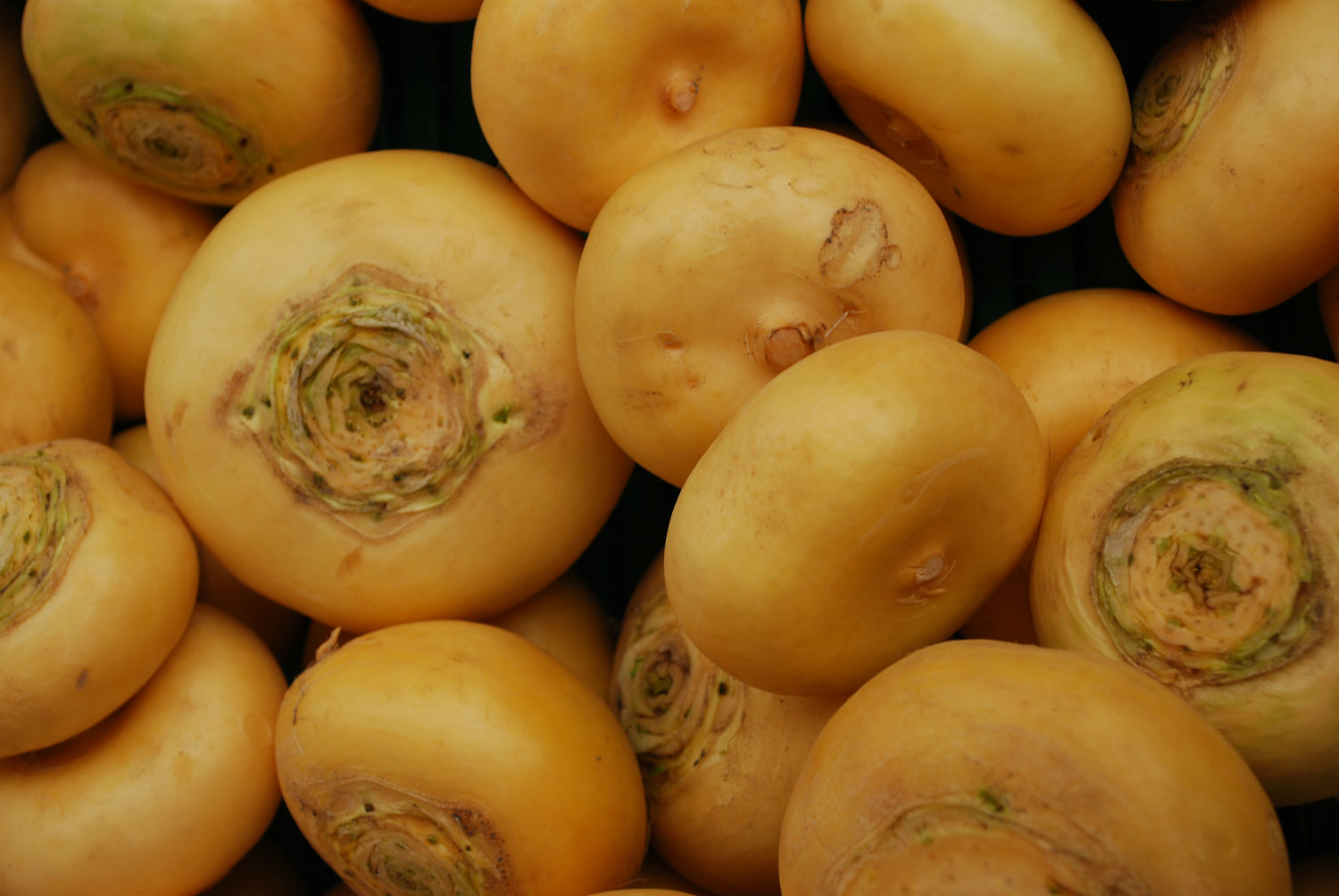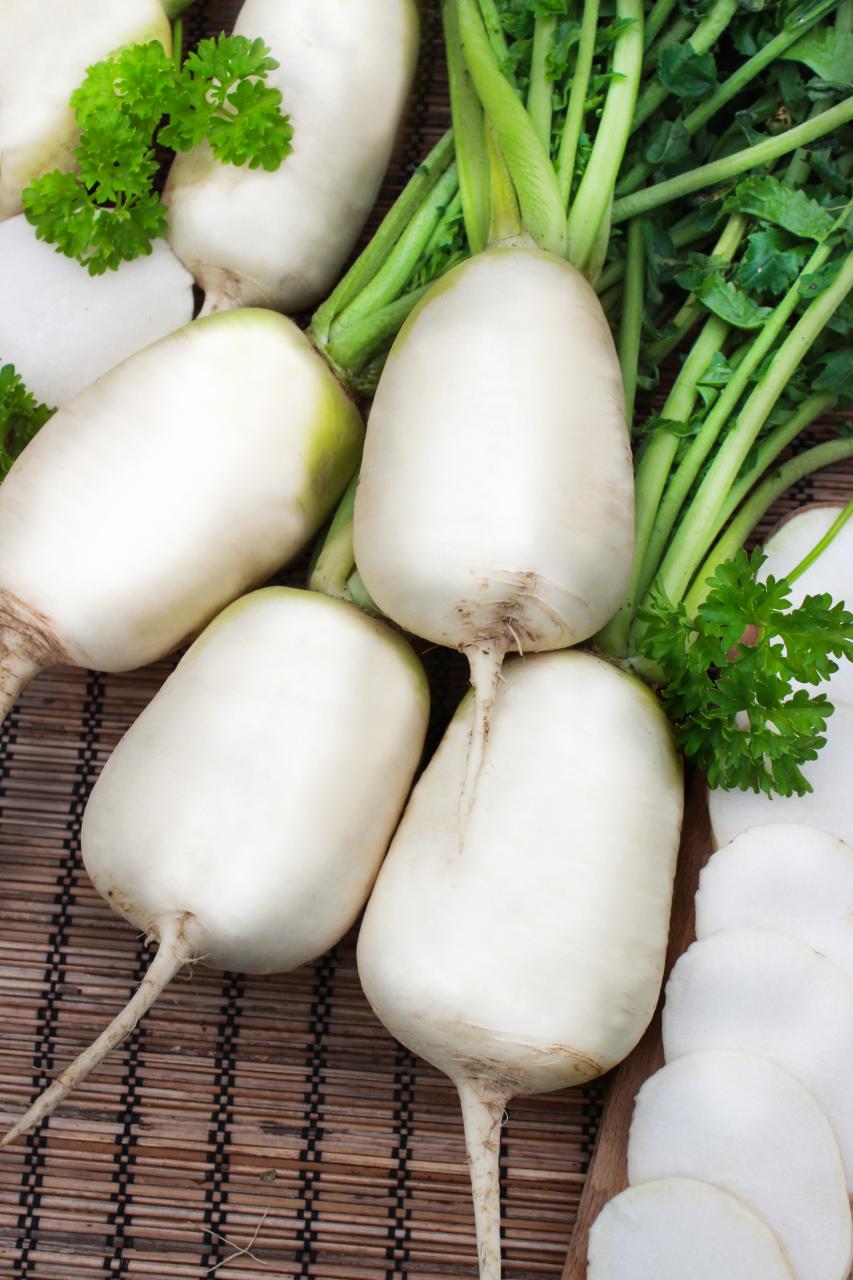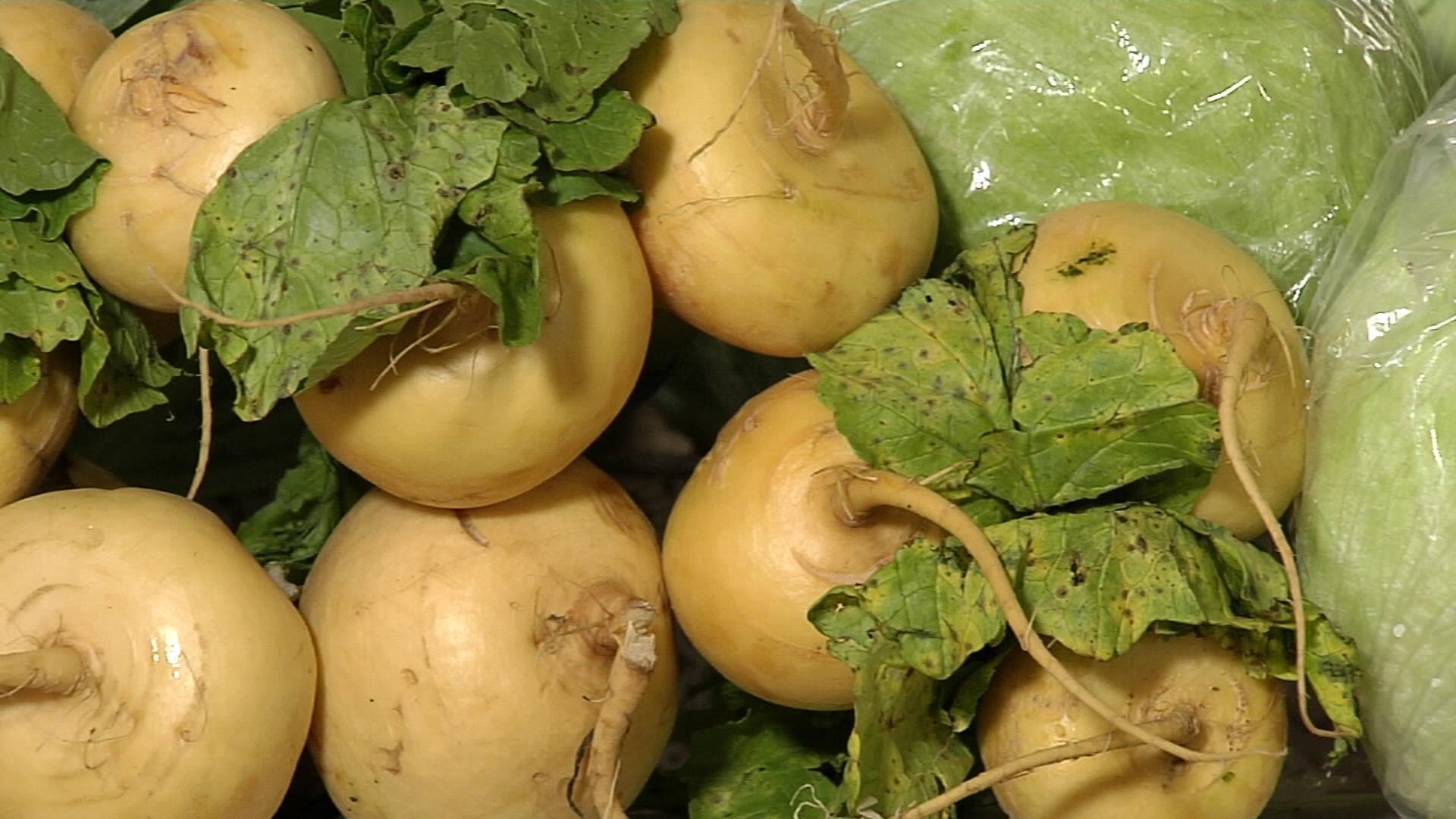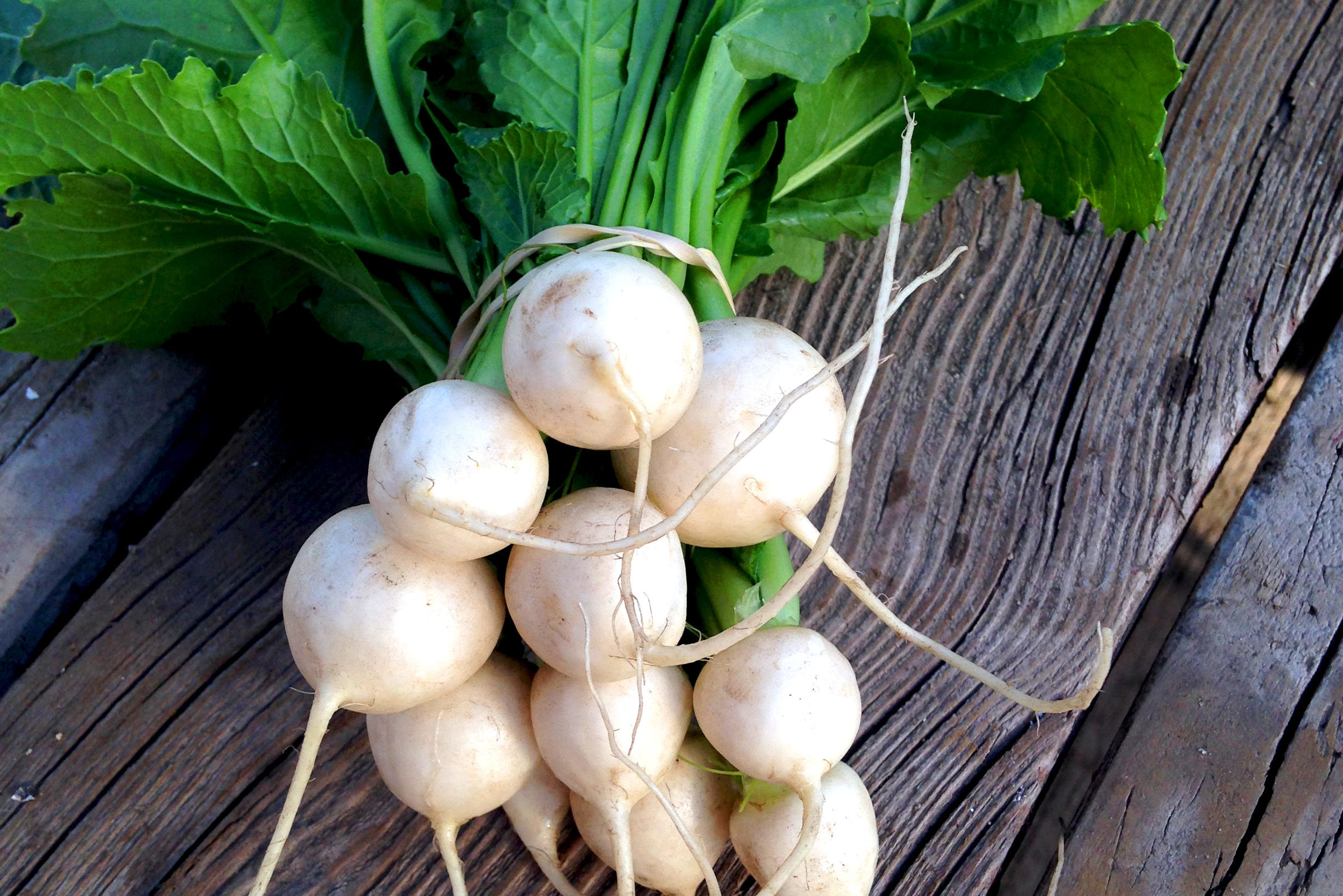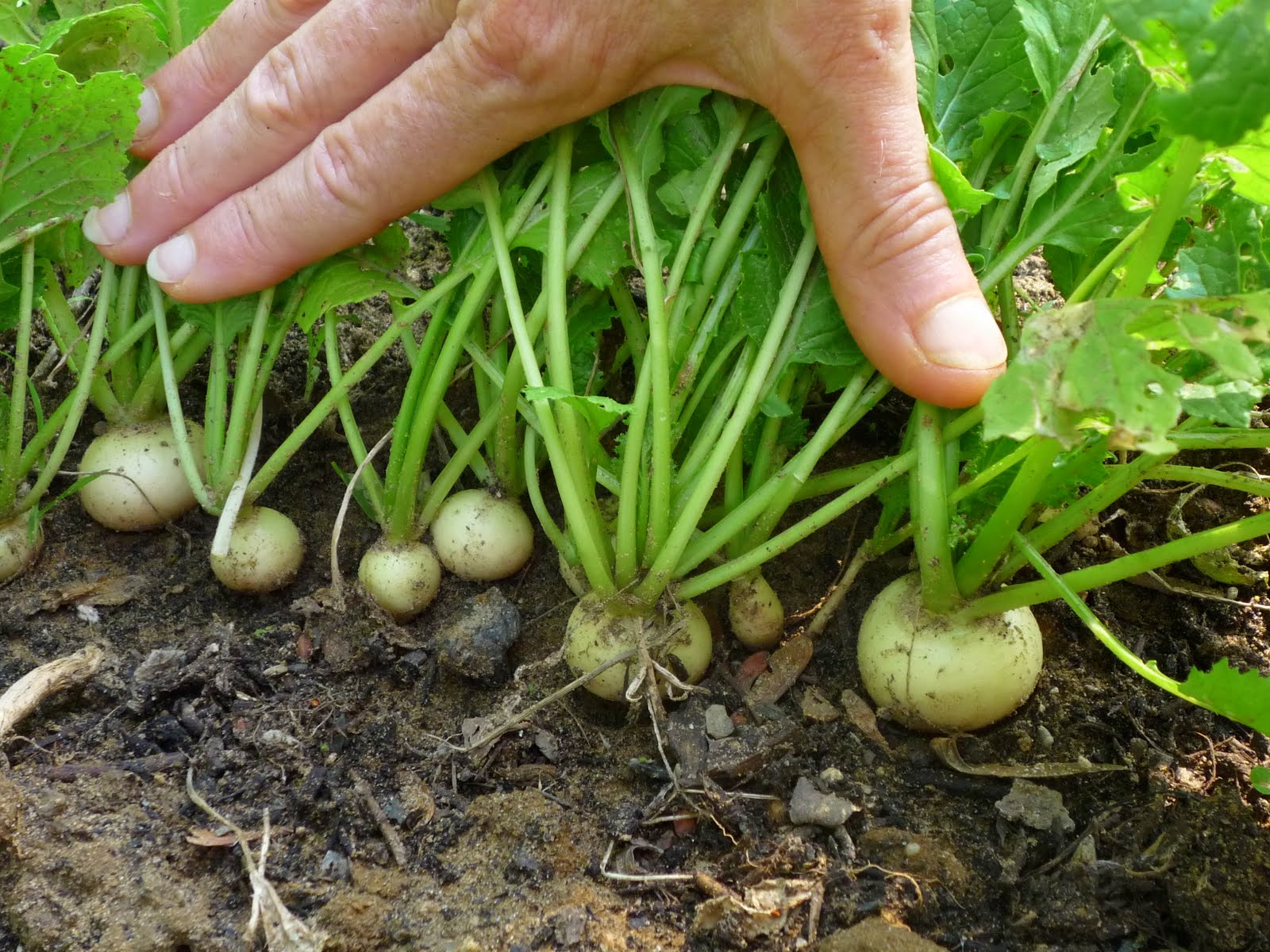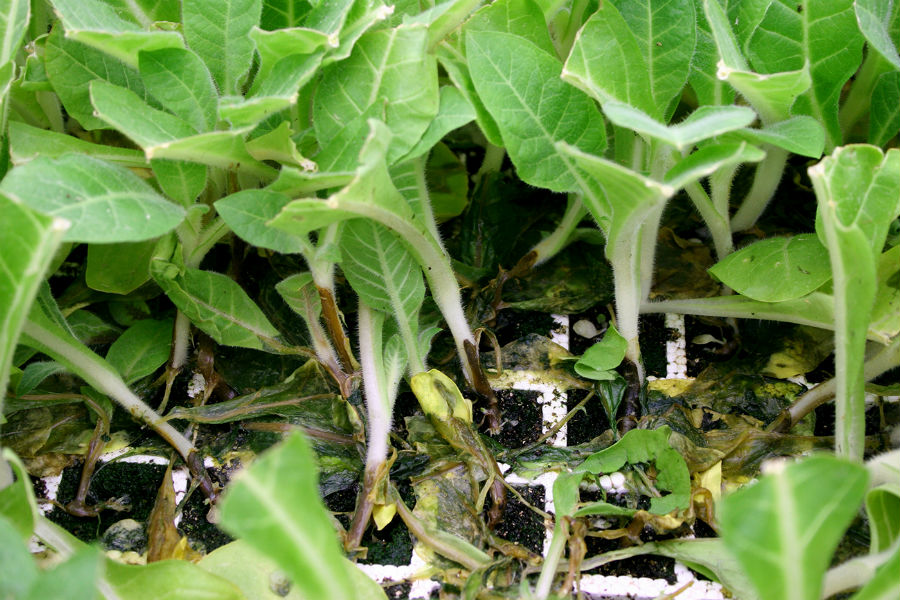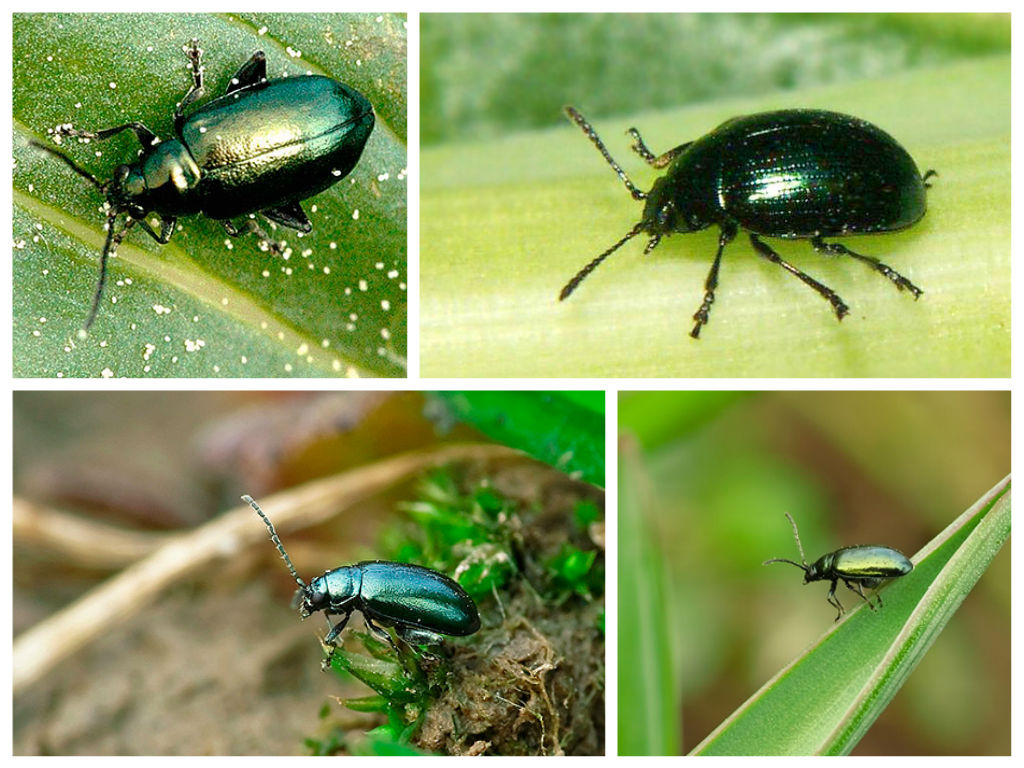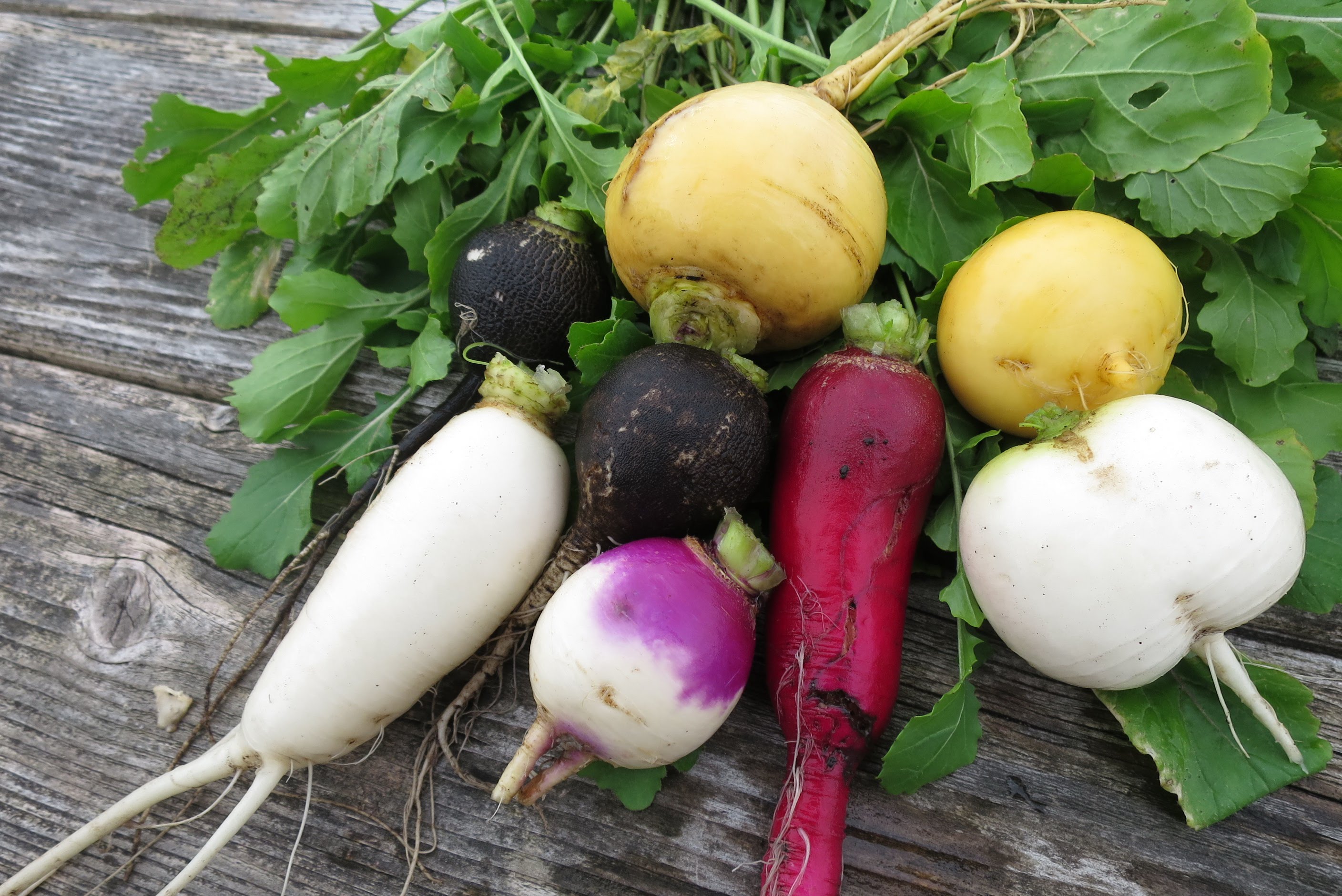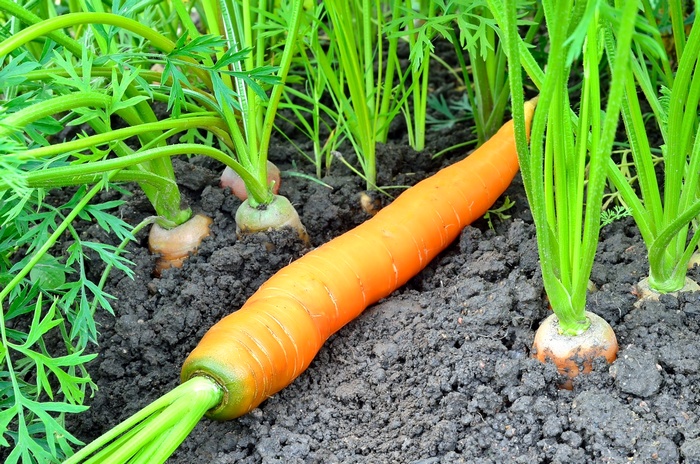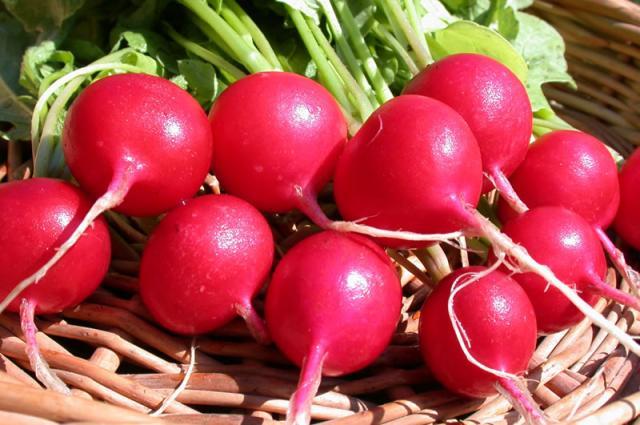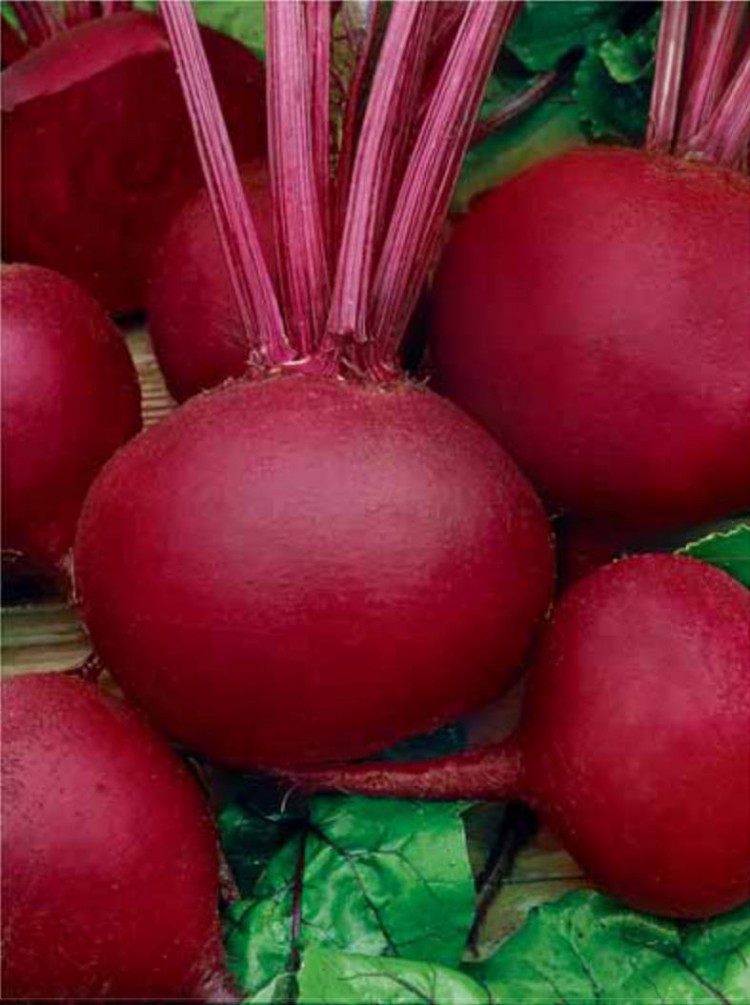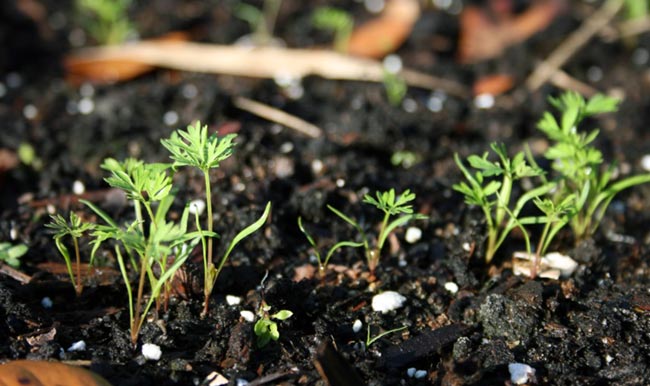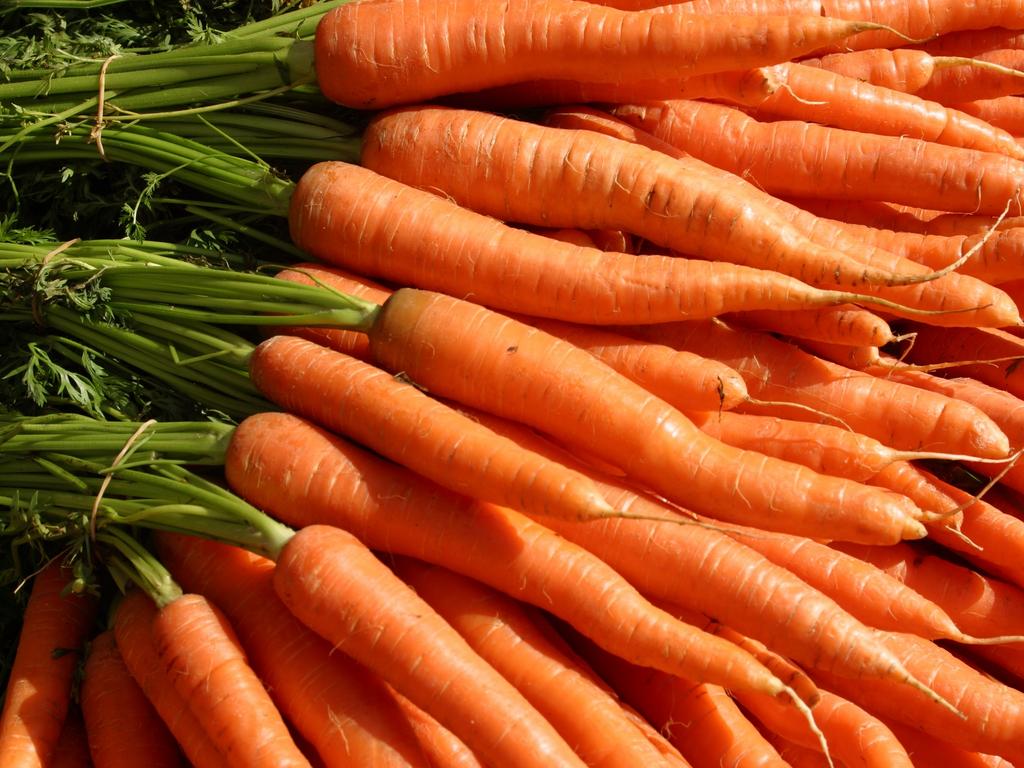Content:
Turnip has been known to many since childhood. A useful vegetable is mentioned in fairy tales. This root vegetable used to be one of the staple foods. This is no coincidence. Turnip, like radish, enhances immunity, has a beneficial effect on digestion, relieves the body of toxins. The culture can be grown in their garden plot by an experienced gardener and a novice gardener. Turnip cultivation and care in the open field will not cause any particular difficulties. But in order to harvest a rich harvest, you need to know how to properly grow a root crop.
Turnip seeds
The seed is very fine. The length of one seed is about 1 mm. The shape is rounded broken line. Color - brown-black. Visually, the seed resembles buckwheat, but smaller in size. The downside of this material is the laboriousness of the landing.
Turnip seeds can lose their germination over time. Your best bet is to buy a new landing bag every year.
Famous varieties
When choosing a variety of turnips, its characteristics should be taken into account. For example, one variety is ideal for growing in the Moscow region, another for growing in the Urals. There are early varieties that ripen within 2 months after planting. Turnip, which has an average ripening period, ripens in 2.5-3 months. All roots that are grown for more than three months belong to the late ripening group.
Petrovskaya 1
Among the varieties of turnip, Petrovskaya 1 stands out. Root crops of the variety are neat, golden in color, not large, the weight of one is about 80-160 g. The shape is round, slightly flattened. The taste is rich, sweetish. Ripening period is average. About 3 kg of fruit can be harvested from one square meter of land. Turnip Petrovskaya, planting and caring for which is simple, is recommended for cultivation in all regions of the Russian Federation. It is believed that turnip grows poorly in the Krasnodar Territory. Kuban is too hot region. However, according to reviews, it is Petrovskaya turnip that can grow in a warm strip. In addition, the changeable climate of Leningrad is also suitable for this turnip. The variety is suitable for making stews, mashed potatoes, fresh consumption. Keeping quality is satisfactory.
Geisha
Cold-resistant, shade-tolerant, leafy variety. Suitable for growing in the central part of Russia, including the Moscow region. Geographic regions where the variety is also successfully cultivated: Siberia, the Urals. A distinctive feature of the Geisha variety is that it is a salad. You can eat not only beautiful, even white fruits, but also delicate tops. The color of the leaves is green. They are crumbled into salads, added to soup. Root crops are small, weight of one - 40-70 g. Sweetish taste. In one square place, up to 2.3 kg ripens. Ripens early.
Russian size
The variety has record large fruits. The weight of one root crop reaches 1.5-2 kg. The color is amber. The shape of the fruit is round, strongly flattened. The variety is cold-resistant. Withstands frosts on soil up to -4 degrees. The pulp is sweetish. Russian size is soared, stewed, crushed into salads, eaten raw. Early grade. Ideal regions for planting are the Urals, Siberia. 8 kg are collected from a square meter.
Gribovskaya
One of the most beautiful varieties. Root crops are lilac in color closer to the tops and white-yellow - at the root.Mid-season variety. This turnip has excellent shelf life for 5-8 months. It is cold-resistant. Usually grown in the Urals. The middle zone of Russia is also suitable for the cultivation of the Gribovskaya turnip. The fruits are large - 200-400 g. 4 kg are harvested from a square meter.
Snowball
This is one of the most unpretentious varieties. Suitable for long-term storage. Root crops have an even rounded shape. The color is gray-white. They are moderately large, each weighing about 200 g. 3.5 kg are collected from a square meter. The taste is sweetish with a pleasant spice. If the dacha is located in central Russia, then the variety gives a good harvest. Often grown for medicinal purposes and as a dietary supplement. The variety is mid-season.
Seed preparation
Before planting turnips, the seeds must be prepared:
- All material is poured out of the bag. It is examined for misshapen, too small seeds. Only the strong and healthy are selected. To shorten the calibration time, it can be carried out using a saline solution: 10 g of salt is dissolved in 200 ml of ordinary water. The material is placed in the solution. All floating seeds are removed. Those at the bottom are being prepared for landing;
- Healthy seeds are wrapped in cheesecloth and placed for 15-20 minutes in hot water, the temperature of which is 45-60 degrees. This procedure will help disinfect the seed;
- Next, the seeds are soaked for a day in a growth stimulator;
- Then they germinate. Gauze is placed in the container. Seeds are poured onto it. The gauze is moistened. The container is stowed away in a dark, warm place, such as a closet. Every 10-12 hours, the rag is moistened with settled water. After 4-7 days, sprouts will hatch.
Boarding time
When to plant turnips in different geographic regions of our country? The crop is planted one of the very first among vegetables. Turnip seeds will be comfortable even when the air temperature is 0 degrees. They are not afraid of small frosts - up to -4 ... -6 degrees. They gain strength during the gradual warming up of the earth. Therefore, in different regions, planting takes place at different times, depending on the snow melt.
If the summer resident chose an early variety of turnips, for example, Russian size or Geisha, then you can plant it in two steps. Spring is right for the first sowing. For the second - summer. Thus, it turns out to take two crops per season. In addition, roots planted in summer are suitable for long-term storage. Turnip, sown in spring, is good for fresh consumption and cooking.
In the Urals, the first landing is allowed on May Day holidays, because at this time in Yekaterinburg, Perm, Chelyabinsk and other cities of the Urals, snow melted. The earth is just beginning to warm up. When to plant turnips in open ground with seeds for the second time in this area? Answer: in the third decade of June. Similar terms are suitable for Siberia.
When to sow turnips in the Central European part of the country? In the middle lane, rapa planting takes place from April 15, since usually at this time snow disappears in this area, and the ground begins to warm up. In summer, it is ideal to sow seeds from 1 to 8 July. If you delay the timing of the second planting, then you can not wait for the harvest - the fruits simply will not have time to form.
To choose an auspicious day, when it is better to plant turnips in a permanent place, you can flip through the lunar sowing calendar.
Preparing the garden
The rapa planting is carried out in open ground. For rap, the bed can be prepared in advance. Autumn is suitable for such an activity. It is best to choose a place where tomatoes and potatoes were previously planted. The best kind of soil is where there is enough clay and sand.
In the fall, the garden is dug up, rotted sawdust and foliage are introduced there.Add phosphorus, potash, nitrogen fertilizers 10-15 g each per 1 square meter.
In the spring, the bed is loosened with a pitchfork or a hoe, leveled with a rake. Fly ash is plentifully introduced there. Ash acts as a protective agent against pests and as a fertilizer. The soil is well spilled. 10 liters of water are poured into 1 square meter. This is done in order to exclude watering after planting, as the water jet can wash the seeds out of the soil. In the moistened earth, shallow trenches of 1.5-3 cm are prepared, the distance between them is 20-30 cm.
Turnip planting
Turnips are planted in open ground in two ways: seeds and seedlings. So, seedlings are grown in soil mixture or peat tablets for 5 weeks. Containers with young plants are kept on the windowsill, the earth is moistened and loosened in time. 14 days before transplanting to a permanent place, containers with seedlings are taken out into the air, thus, the plants are hardened. The first time they are left on the street for 5 minutes. On the second day - by 10. On the third - by 15 and so on.
If seedlings are transferred to the garden, then the gardener must very carefully handle the delicate roots. It is best to transplant directly with a clod of earth that protects the rhizome. A distance of about 10-15 cm should be left between the plants.
Planting turnip seeds in open ground has its own specifics. To make it easier to plant seeds that are too small, they are mixed with starch or river sand. You can also prepare tapes from toilet paper, 2 cm wide. Seeds are glued onto them with a paste made from flour. One strip can be up to 2 meters long, depending on the length of the bed. The distance between the seeds is 6-10 cm. This method will help to exclude further thinning. In addition, toilet paper will quickly soak, it will not prevent the seeds from taking root.
It is recommended to cover the bed with a regular film or cover it with peat mulch for several days. As soon as the seedlings stretch 1 cm, the garden must be opened.
Care
How to grow a healthy and strong turnip? If the seeds were sown in the usual way without using tape and sand, then the seedlings will need to be thinned. Thickening must not be allowed. 10-14 days after planting, as soon as shoots appear, the weakest plants are harvested.
The next thinning is organized 14-18 days after the first. It is essential that each remaining instance has sufficient free space. The distance between plants should be 6-12 cm. This way the plants will receive the necessary amount of nutrients from the soil. As a result, the turnip will grow healthy and strong.
It is recommended to combine thinning with weeding and loosening. These procedures are easiest to carry out after rain or watering.
Growing turnips outdoors requires regular watering. It is enough to water the culture every 3-4 days. 6-10 liters of water are consumed per square meter. When the roots are formed, they begin to water less often - once every few weeks. Abundant moisture at this stage of plant development can negatively affect the fruits: they begin to crack, rot.
Watering turnips is best in the evening. For the procedure, settled water heated by the sun is suitable.
Once every two weeks, the bed is loosened after watering and sprinkled with ash. You can exclude this procedure if you cover the ridge with mown grass and straw in advance.
In addition to ash, the culture is fed with compost and mineral fertilizers. They are brought in in May and July.
Pests and diseases
Turnip is susceptible to the same diseases as other cruciferous vegetables.
Among the diseases that can overcome turnips:
- White rot;
- Powdery mildew;
- Blackleg.
White rot
Disease detection is not difficult. The tops will begin to become covered with a gray bloom, rot. Control measures include removing diseased plant parts. It is necessary to sprinkle the tops with split coal, spread with chalk, dissolved in water with potassium permanganate. The use of drugs Hom, Previkur, Acrobat MC is allowed.
Powdery mildew
This disease affects the tops. First, a light powdery bloom is visible, which then changes color and becomes dark. The affected areas wither, disappear. It is best to fight with chemicals. The following fungicides are distinguished: Skor, But, Topsin.
Blackleg
The characteristic signs of the disease are thinning and blackening of the lower part of the tops and the upper part of the root crop. A black leg is treated with chemicals based on copper. Suitable fungicides Hom, Bordeaux liquid.
The culture can be at the mercy of pests, including:
- Summer and spring cabbage flies;
- Cabbage butterfly;
- Wireworm;
- Garden scoop;
- Cruciferous fleas.
Summer and spring cabbage flies
These pests are similar to each other. Both flies are gray with three stripes. The spring specimen may look smaller than the summer specimen. The size of the spring is 5-6 mm, the summer is 8 mm. They both lay their eggs on turnips. The danger is posed by the larvae that eat the root crop. Because of them, the plant withers. To ward off these pests, you can mix naphthalene with sand. The mixture is laid out between the bushes. Among the effective drugs stand out BI-58, Zemlin, Thunder.
Cabbage butterfly
A very beautiful butterfly. She has large white wings with a yellow tint. There is a dark border and black dots. Caterpillars are dangerous. They are light green in color with black spots. They eat the leaves. The gardener must collect all the caterpillars and process the crop with industrial means, for example, Karbofos, Aktofit, Aktara.
Wireworm
The brown worm eats young plant roots and leaves. Due to the presence of this pest, turnip can wither at the very beginning of the growing season. Fighting involves the use of chemicals used to cultivate the land. It is recommended to use the drugs Provotox, Grom-2, Nemabakt.
Garden scoop
This is also a butterfly that flies in the dark. She lays eggs on the tops of the turnip. The larvae that appear eat the pulp of the tops. The larvae are manually removed from the leaves. The affected areas are removed if possible. It is allowed to use the preparations Fitoverm, Natur Guard, Lepidocid.
Cruciferous fleas
They are microscopic bugs that eat young tops. As a result, the leaves and petioles wilt. To remove flea beetles, plantings are sprinkled with ash. In stores you can buy drugs Decis, Karate, Fagot, Aktofit. Before using any of the tools, you must carefully read the instructions and follow them. Details about the means of combating various pests can be found on the blog of Yulia Minyaeva.
Harvesting
Depending on which type of turnip grows in the garden, the harvest takes place at different times. If the early one is harvested after 2 months, then the late one - after 3.5. At the same time, you can not delay the collection. Turnip picked in time has a bright, rich taste, it is not hard.
Harvesting takes place according to the principle of pulling root crops from the ground by the tops. This must be done carefully. Turnips must not be damaged. After the tops are removed, but not under the root, but leaving 1.5 cm. Before placing the roots in the cellar, they are left under a canopy in the fresh air. There they dry for several days.
It is best to store the root vegetable in a cellar. Plain wooden boxes are being prepared. Turnip is covered with sand.
Variety of turnip varieties
Among the varieties with unusual colors, Burnt Sugar and Red Sun stand out. The color of the flesh of the Burnt Sugar variety is snow-white, and the color of the peel is black. The Red Sun has a pink-red rind and a white flesh. The sweetest varieties are White Ball, Snow White, Golden Ball. Delicious salad variety - Tokyo.The earliest are the turnip Granddaughter, May yellow.
Summer residents who decide to plant turnips on their site will not regret it. It is not so important which of the varieties they prefer, the main thing is to buy the right one for their strip. Then the choice will be correct. Turnips, cultivation and care in the open field, which are very easy, will yield healthy, tasty fruits that can be stored all winter.

